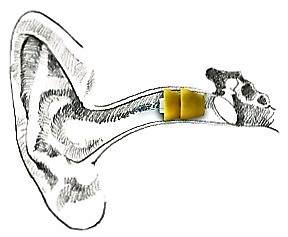The Advantages & Disadvantages of Hearing Aid Types
Every hearing aid manufacturer produces many different styles of hearing aids. Trying to decide on the right style for you can be be difficult, whilst discretion is always a factor, it shouldn't be the only one. At Audi-Lab we carry many types of hearing aids from many hearing aid manufacturers. It can be hard for the professional to keep up with the changes and technological advances. Here are the advantages and disadvantages in different styles of hearing aids. We hope that these details can help you make an informed decision.
Here are the advantages and disadvantages in different digital hearing aid styles:
ITE or In-the-Ear hearing aids, Full Shell
The Advantages:
1. There should always be twin microphones, twin microphones deliver much better clarity when you are in an environment that is noisy.
2. Because of the size of the aid, they may fit a more severe loss.
Disadvantages:
1. These type of hearing aids are more open to problems with moisture and ear wax. Cleaning them on a daily basis is necessary to prevent problems.
2. These type of hearing aids are more prone to repairs than BTE Behind The Ear Devices.
3. There could be feedback problems with this style because the receiver and microphone are closer together than in other styles of hearing devices.
ITC or In-the-Canal hearing aids:
Advantages:
1. This style of hearing device is more discrete than the ITE ones are. This is a good style for anyone that may be self conscious about wearing a hearing aid.
2. Again, this aid may well fit dual mics so they can do well in noise, however, this is only if the person’s ear size allows enough room for dual microphones.
Disadvantages:
1. Again, you can have feedback problems because of the close distance between the receiver and the microphone.
2. The hearing device is more susceptible to ear wax and moisture damage since it is worn in your ear canal.
3. The devices more prone to repairs.
CIC or Completely-in-Canal hearing aid
Advantages:
1. Small and very discreet; which makes them perfect for anyone that doesn’t want others to know you are using a hearing device.
2.Overall sound quality should be good because of its position in their ears.
Disadvantages:
1. The size of this hearing device makes it hard for some people to handle and use easily, especially people that have arthritis.
2. Feedback issues again
3. Because of the device's placement, it is probably one of the most prone to needing repair.
4. Occlusion, the feeling of talking in a bucket, can be a significant problem with this type of hearing aid fit.
BTE or Behind-the-Ear hearing aids
Advantages:
1. This type of digital hearing aid is pretty much ideal for most people, no matter what your degree of hearing loss is.
2. There are less feedback problems with this style because there is far greater seperation between the microphones and receivers.
3. This type of device rarely needs repair.
Disadvantages:
1. This style can be larger than others, however since micro BTEs have been introduced they are very hard for others to see, especially if they are able to be covered with the wearer’s hair.
2. They may have either ear buds or ear molds. Ear molds will more than likely need to be remade every two to four years to help preserve the acoustic seal, they will also need to be re-tubed periodically. Ear tips and tubes on open fit micro BTEs will have to be changed periodically.
RIC or Reveiver-In-Canal hearing aids
Advantages:
1. This type of digital hearing aid is pretty much ideal for most people, no matter what your degree of hearing loss is.
2. There are less feedback problems with this style because there is far greater seperation between the microphones and receivers.
3. This type of device can be exceptionally discrete even for severe to profound losses.
Disadvantages:
1. They may have either ear buds or ear molds. Ear molds will more than likely need to be remade every two to four years to help preserve the acoustic seal. Ear tips will have to be changed periodically.
2. Because the receiver is in the ear canal, they are more prone to failure than traditional type BTEs. However, changing the receiver in RIC devices is an easy job that can be done in the office rather than a repair lab.
These are just a few of the advantages and disadvantages in different styles of hearing aids that you need to be aware of. It is a good idea to take your time to do your own research on hearing aid styles and talk to a hearing aid audiologist to help you make the smart style choice for your particular hearing loss.






